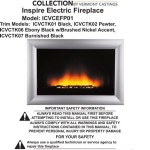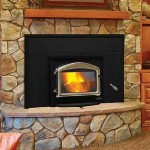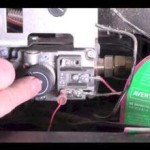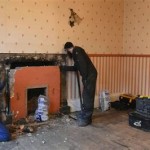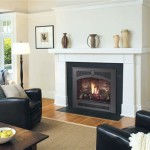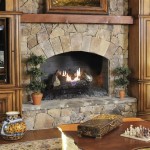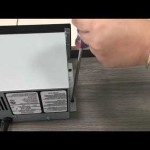Black Fireplace Paint: Aesthetics, Application, and Considerations
The fireplace, traditionally a focal point of the home, often benefits from updated aesthetics to complement changing interior design trends. Black fireplace paint presents a popular option for achieving a modern, sophisticated look, transforming dated brick, stone, or even metal surrounds into striking features. This article will explore the advantages, application techniques, and critical considerations surrounding the use of black fireplace paint.
The inherent visual appeal of black stems from its versatility. It seamlessly integrates into diverse design schemes, acting as a neutral backdrop while simultaneously adding a touch of drama and elegance. A black fireplace can serve as a strong contrast against lighter walls, drawing the eye and establishing the fireplace as a deliberate design element. Conversely, when paired with darker walls, a black fireplace can contribute to a cohesive, moody atmosphere.
Beyond aesthetics, black paint offers practical benefits. Dark colors, in general, are effective at concealing soot stains that naturally accumulate around fireplaces. This reduces the need for frequent cleaning and maintenance, preserving the fireplace's appearance over extended periods. Furthermore, black paint can visually minimize imperfections in older brick or stone, providing a cost-effective alternative to extensive repairs or replacement.
Selecting the Right Type of Paint
Choosing the appropriate type of paint is paramount for achieving a durable and visually appealing result. Standard interior paints are not suitable for fireplace applications due to their inability to withstand the high temperatures generated by a working fireplace. Heat-resistant paints are engineered to endure these conditions without blistering, cracking, or releasing harmful fumes.
Specifically, high-temperature paint, often used for automotive or industrial applications, is a viable option. This type of paint is formulated to withstand temperatures ranging from 500°F to 1200°F, depending on the specific product. These paints are typically available in spray form, facilitating even application, especially on textured surfaces.
Another option is fireplace paint designed explicitly for this purpose. These paints often contain ceramic additives that enhance heat resistance and durability. They are available in various finishes, including matte, satin, and gloss, allowing for customization of the fireplace's appearance. It's crucial to consult the manufacturer's specifications to ensure the chosen paint is compatible with the fireplace material and the expected operating temperatures.
Primer selection also plays a critical role. A high-quality primer designed for masonry or metal surfaces is essential for promoting adhesion and preventing the paint from peeling or chipping. The primer should also be heat-resistant to provide a stable base for the topcoat. Certain primers are specifically formulated to block stains, further enhancing the finished appearance and concealing existing discoloration.
Preparation is Key to a Professional Finish
Proper preparation is arguably the most critical step in achieving a professional-looking, long-lasting paint job. This involves thorough cleaning, surface repair, and meticulous masking. Neglecting these steps can compromise the paint's adhesion and result in an uneven, unsatisfactory finish.
The initial step is to thoroughly clean the fireplace surround. This can be accomplished using a wire brush, a stiff-bristled brush, and a solution of trisodium phosphate (TSP) or a specialized masonry cleaner. Remove all loose debris, soot, dust, and grease. Rinse the surface thoroughly with clean water and allow it to dry completely before proceeding.
Inspect the fireplace for any cracks, chips, or damaged mortar joints. Repair these imperfections using a masonry patching compound formulated for fireplace applications. Allow the patching compound to cure completely according to the manufacturer's instructions. Sand the repaired areas smooth to blend seamlessly with the surrounding surface.
Protect surrounding areas from overspray or accidental paint drips by masking off the firebox opening, the hearth, and any adjacent walls or trim using painter's tape and drop cloths. Ensure the masking is applied securely to prevent paint from seeping underneath.
Application Techniques for Optimal Results
Applying black fireplace paint requires a methodical approach to ensure even coverage and a smooth, professional finish. Whether using spray paint or a brush and roller, multiple thin coats are preferable to a single thick coat. This technique minimizes the risk of drips, runs, and uneven drying.
When using spray paint, hold the can approximately 8-10 inches from the surface and apply thin, even coats, overlapping each pass slightly. Allow each coat to dry completely before applying the next. Two to three coats are typically sufficient for achieving full coverage. If using a brush and roller, use a high-quality brush for cutting in along edges and corners and a short-nap roller for covering larger areas. Apply thin, even coats, working in one direction to minimize brush strokes.
Maintain adequate ventilation during the painting process, especially when using spray paint. Wear appropriate personal protective equipment, including a respirator or dust mask, gloves, and eye protection. Allow the paint to cure completely according to the manufacturer's instructions before using the fireplace. This typically takes several days, depending on the paint type and environmental conditions.
Once the paint has fully cured, carefully remove the masking tape and drop cloths. Inspect the finished surface for any imperfections or touch-ups. If necessary, lightly sand any rough spots and apply a thin coat of paint to correct them.

30 Gorgeous Painted Brick Fireplace Ideas

Our Black Painted Fireplace Bright Green Door

Black Painted Fireplace How To Paint Stone

Our Black Painted Fireplace Bright Green Door Home Brick Fireplaces

We Painted Our Stone Fireplace Black Most Lovely Things

Gorgeous Diy Fireplace Makeover 3 Reasons To Paint Your Black Lehman Lane

See How I Made Over An Ugly Clunky Stone Veneer Fireplace With Paint

Easy Weekend Fireplace Makeover Best Paint To Use Catholic Home

Our Black Painted Fireplace Bright Green Door

Painted Black Brick Fireplace Diy Inspired
Related Posts

